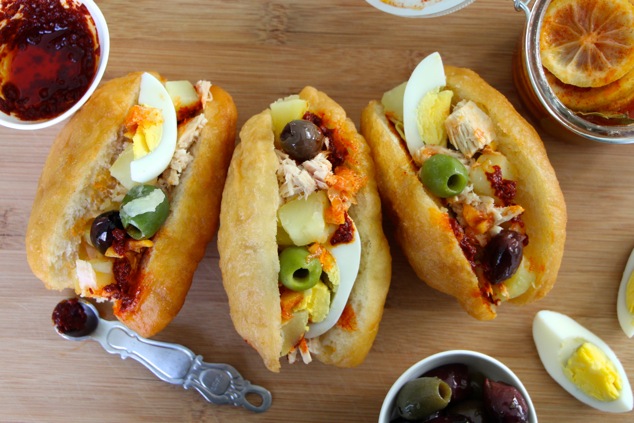 One of the ways to truly understand what Tunisian flavors are all about is to give a HUGE bite into a great Tunisian Fricassee roll. These traditional Tunisian rolls are made out of yeast dough and if you don’t think this is comforting enough, they are also deep-fried!!! Fricassees are usually stuffed with tuna, olives, Harissa, preserved lemons, hard-boiled egg and potatoes…. In other words a combo of flavors that is pure Tunisian goodness.
One of the ways to truly understand what Tunisian flavors are all about is to give a HUGE bite into a great Tunisian Fricassee roll. These traditional Tunisian rolls are made out of yeast dough and if you don’t think this is comforting enough, they are also deep-fried!!! Fricassees are usually stuffed with tuna, olives, Harissa, preserved lemons, hard-boiled egg and potatoes…. In other words a combo of flavors that is pure Tunisian goodness.
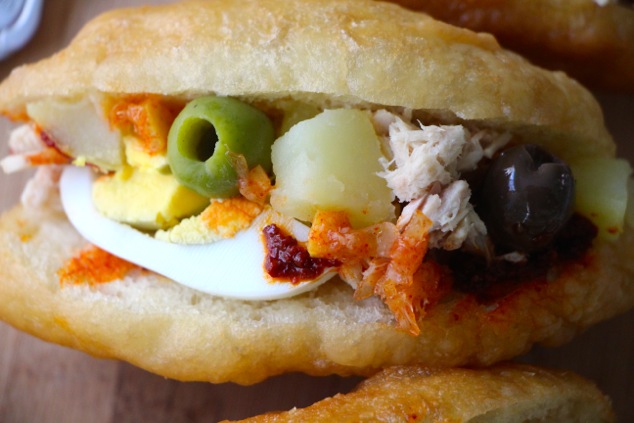 All these Tunisian flavors that come together in a super satisfying roll balance each other in such a yummy way and made Fricassees very popular in Israel. In fact, Fricassees have become part of main stream Israeli cuisine. If you taste it, you’ll get it; it is the kind of food that once you try it, it will come back and haunt you in your cravings…
All these Tunisian flavors that come together in a super satisfying roll balance each other in such a yummy way and made Fricassees very popular in Israel. In fact, Fricassees have become part of main stream Israeli cuisine. If you taste it, you’ll get it; it is the kind of food that once you try it, it will come back and haunt you in your cravings…
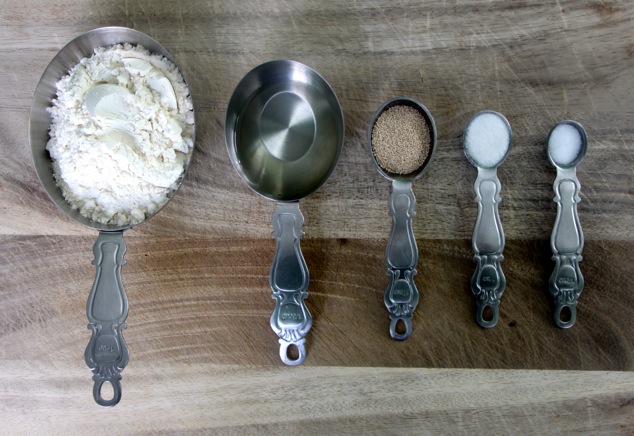 You will need:
You will need:
[Makes 20-25 rolls]
4 cups Flour PACKED (750-800 gr.)
2 tsp. (Active) Dry Yeast
1 tsp. Sugar
1¼ + ½ cups warm Water
¼ tsp. Salt
¼ cup Canola Oil
* Canola Oil/Avocado Oil for deep-frying
Fricassé is traditionally stuffed with:
Tuna
Olives
Hard Boiled Egg
Boiled Potatoes
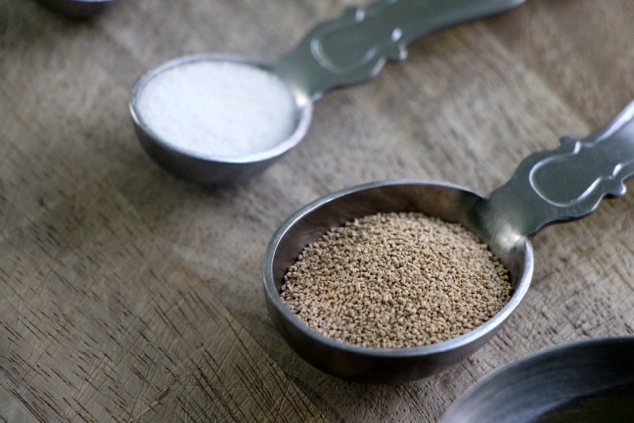 A few words about Yeast dough:
A few words about Yeast dough:
Generally, I like using dry active yeast; it is the most common yeast especially when it comes to easy usage and storage. To make sure yeast dough is successful, we need to provide it with the BEST conditions. Basically yeast needs three things: 1. Warm temperate 2. Sugar as food 3.Time and patience. Isn’t it what we all need in life…
1. Keep it Warm: Temperature is one of the most important variants to yeast dough. Yeast enjoys warm temperature, not too high not too cold. Make sure that the water added to the yeast (and the dough) is pleasantly warm (a little over 100°F). Also make sure to place the dough in a warm location. I like to put it by the oven or the stove specially if I’m cooking something; sometimes I put it by my kettle and use the waiting time to make myself a cup of coffee or tea…
2. Feed your Yeast: Yeast likes to “eat” sugar, especially dry active yeast. Add a little sugar to the yeast when it is being activated, the ratio of sugar to yeast is about 1:2 (1 teaspoon of sugar to 2 teaspoons of dry yeast).
3. Be Nice and Patient: Yeast dough needs time to rise, grow and develop some gluten. I strongly believe in “3 Times Rise is a Charm” – The first rise happens when the yeast, sugar and water meet in their “flour cave” and the yeast become active. Second rise is when the dough rests for the first time. Usually after 90 minutes it will double in size. It is very important to cover the bowl well with plastic wrap. Air tends to dry the outer part of the dough and creates a crust that prevents from the dough to rise. The third rise usually happens after you form the rolls or bread or whatever baked goods you’re doing and you let them rest covered for about 20-25 minutes before baking.
Let’s get to work!
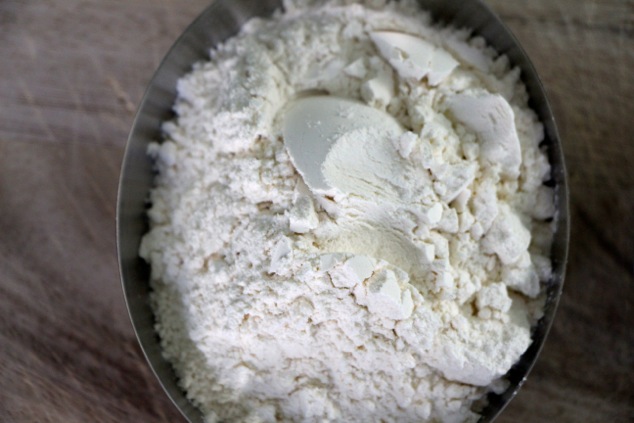
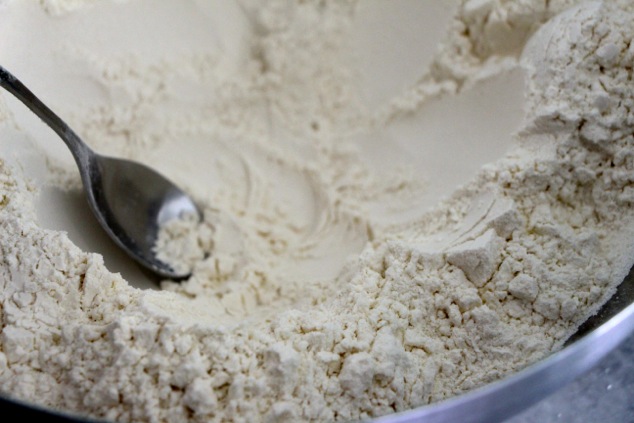 Start with the flour in a big bowl. Create a little crater in the middle of the flour. Make sure to not expose the bowl and leave some flour at the bottom of the crater.
Start with the flour in a big bowl. Create a little crater in the middle of the flour. Make sure to not expose the bowl and leave some flour at the bottom of the crater.
Place the dry yeast and sugar in the crater. Add ½ a cup of warm water right onto the dry yeast and sugar.
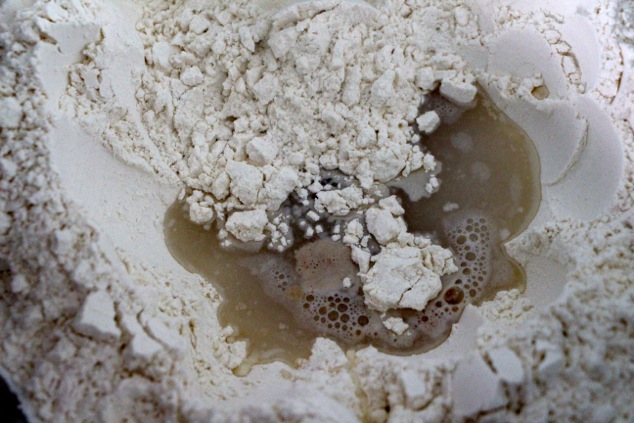
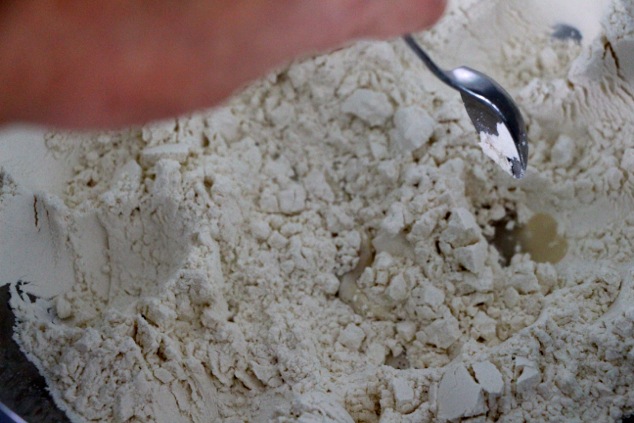 Cover with some flour and smooth the top. Allow the yeast mixture to do its thing for about 10-15 minutes.
Cover with some flour and smooth the top. Allow the yeast mixture to do its thing for about 10-15 minutes.
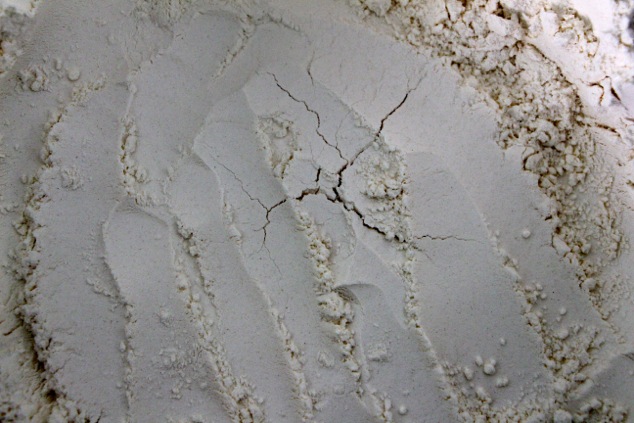 You will notice the flour starts to crack as the yeast mixture rises and bubbles out of the cracks… This is my kids’ favorite stage when we are making yeast dough together… they wait so patiently and watch every move of the flour and yeast…One time they started singing while waiting and watching the flour and yeast. They told me that yeast likes singing and it will make it come out even quicker and grow even bigger… 🙂 So you may try to sing to yours as well… you never know what will happen…
You will notice the flour starts to crack as the yeast mixture rises and bubbles out of the cracks… This is my kids’ favorite stage when we are making yeast dough together… they wait so patiently and watch every move of the flour and yeast…One time they started singing while waiting and watching the flour and yeast. They told me that yeast likes singing and it will make it come out even quicker and grow even bigger… 🙂 So you may try to sing to yours as well… you never know what will happen…
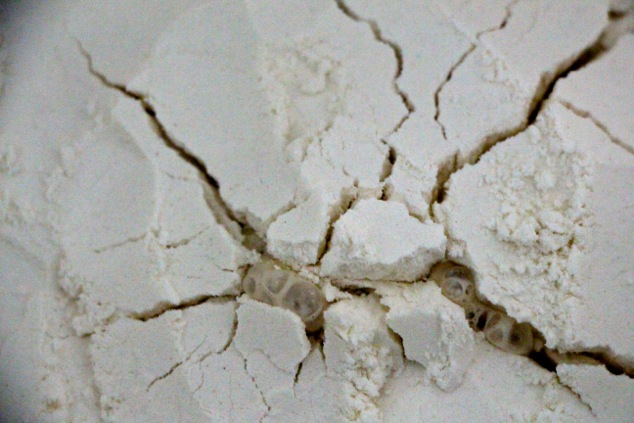
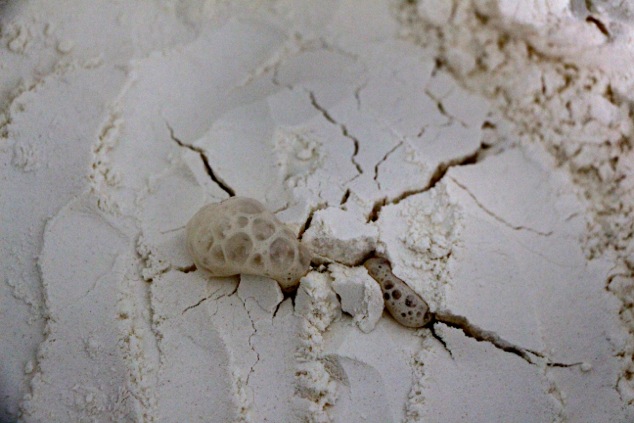 Look closely …
Look closely …
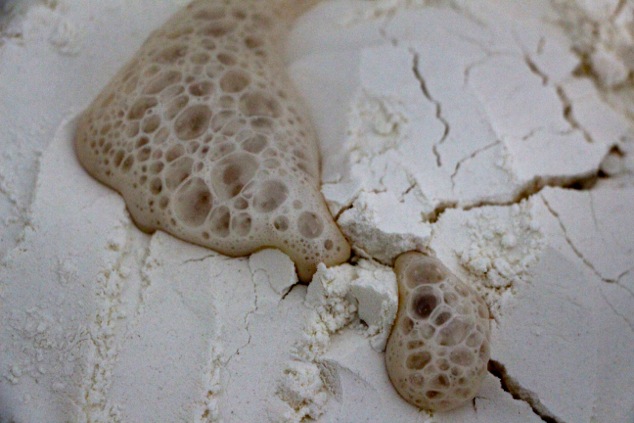
check out all this action!
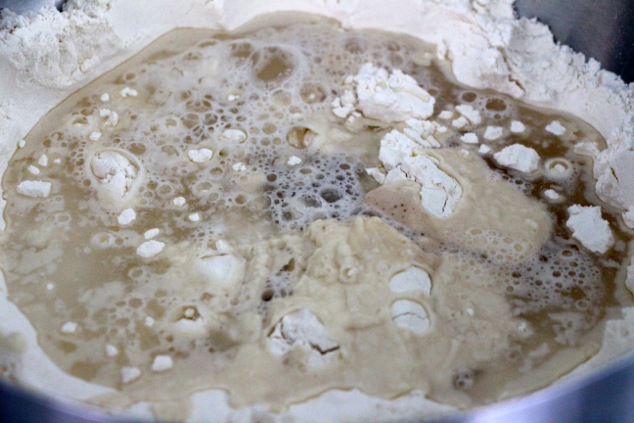 After 10-15 when the yeast mixture emerged from the flour, add the rest of the warm water and start kneading the dough.
After 10-15 when the yeast mixture emerged from the flour, add the rest of the warm water and start kneading the dough.
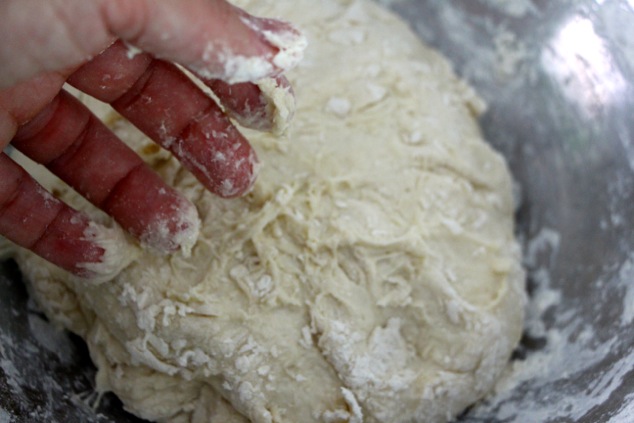
It feels soft and a bit sticky… Don’t worry. Add the salt and continue kneading.
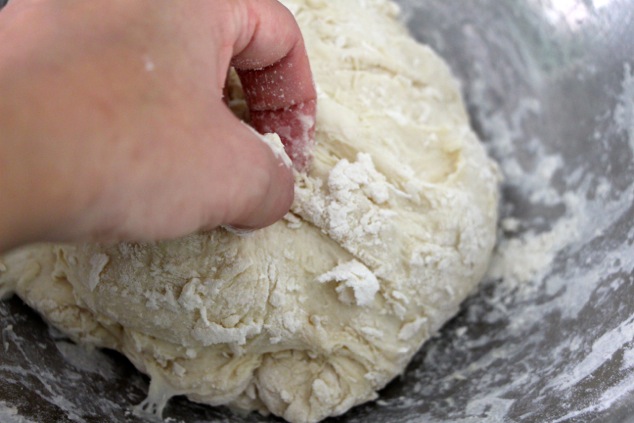
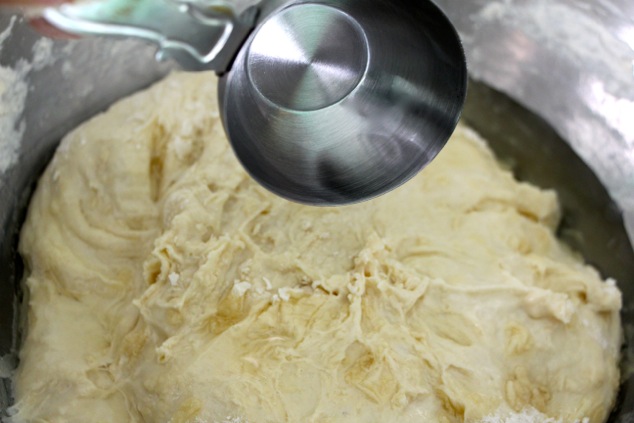 When the dough starts to come together add the oil, continue kneading and see how the oil helps to clean your hands… 🙂
When the dough starts to come together add the oil, continue kneading and see how the oil helps to clean your hands… 🙂
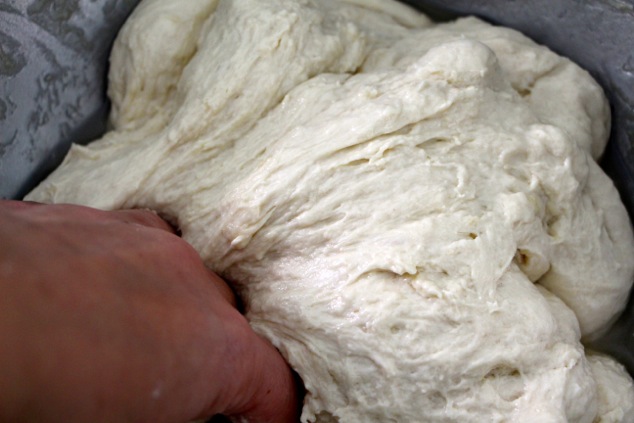 Keep kneading the dough…
Keep kneading the dough…
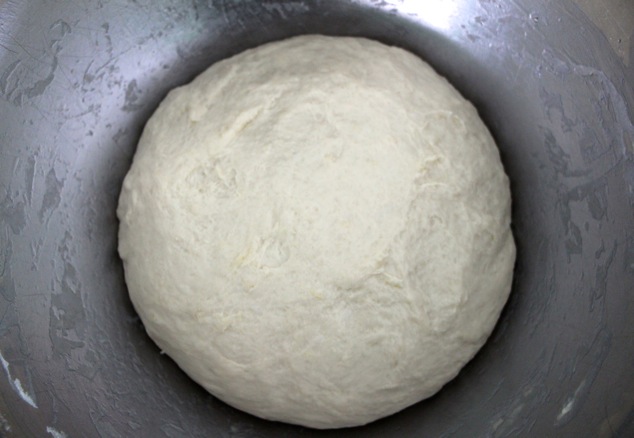
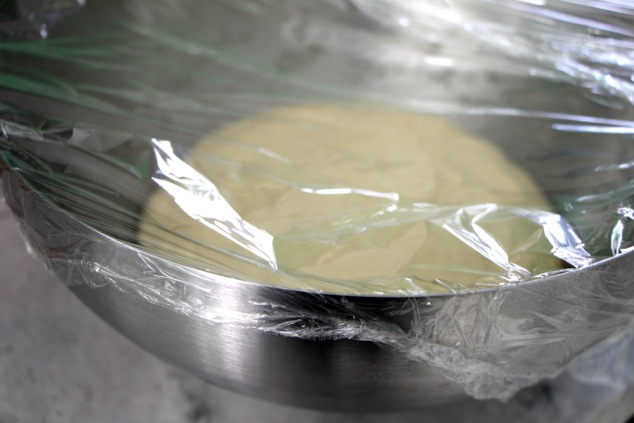 Form the dough into a ball and cover the bowl with plastic wrap. Set the dough aside in a warm place to rise for almost couple of hours.
Form the dough into a ball and cover the bowl with plastic wrap. Set the dough aside in a warm place to rise for almost couple of hours.
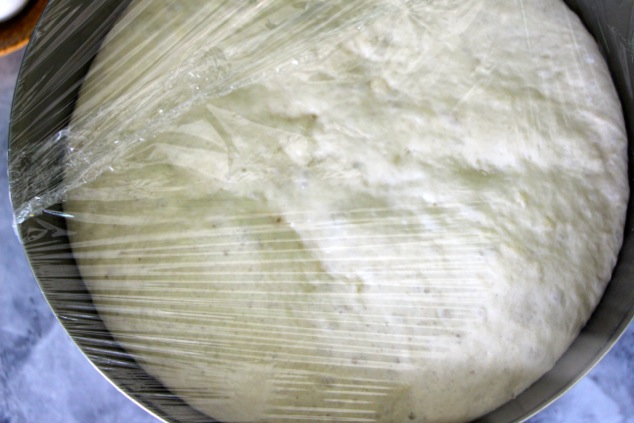 The dough will at least double in size.
The dough will at least double in size.
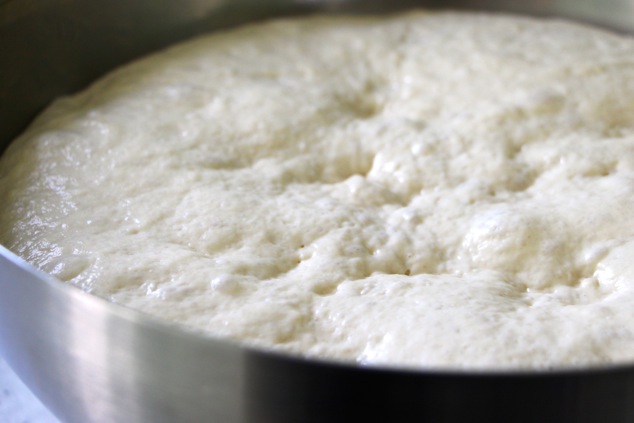 After the dough has risen knead it one more time and form small dough balls; each dough ball weighs 50-70 grams (about 2 oz.).
After the dough has risen knead it one more time and form small dough balls; each dough ball weighs 50-70 grams (about 2 oz.).
My favorite way to do it is to divide the dough into four parts, roll each part into a long log and cut it into 5 or 6 equal pieces. Roll each little piece into a perfect ball pinch it and pull just a little on both ends to create the Fricassee roll shape.
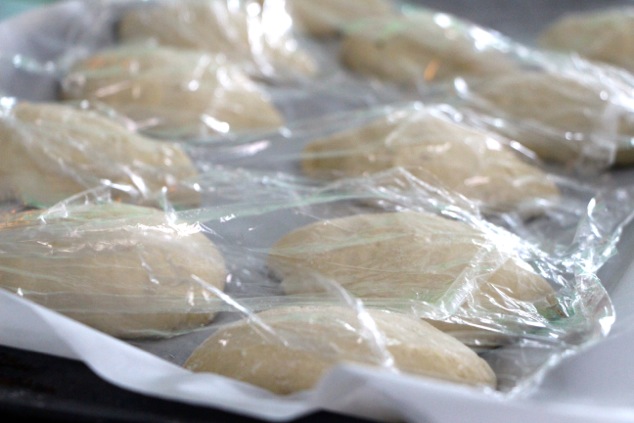 Set them aside on sprayed parchment paper. They are going to rise again, so make sure they are spaced out enough on the tray. Cover with some plastic wrap and let them rise for about 20 minutes. Meanwhile, heat up the oil in your pot or a deep fryer if you have one.
Set them aside on sprayed parchment paper. They are going to rise again, so make sure they are spaced out enough on the tray. Cover with some plastic wrap and let them rise for about 20 minutes. Meanwhile, heat up the oil in your pot or a deep fryer if you have one.
A Carrot Trick 🙂
Successful (continuous) deep-frying guarantees crispy food that does not absorb too much oil. Keeping the right temperature is key to that success. My Savta (grandma) used a small piece of carrot (thin stick looking) to check the oil temperature right before she dropped the food in it. She kept the carrot piece in the oil to give her indication to the changes in oil temperature. My Savta also claimed that the carrot prevents the oil from burning and turning dark.
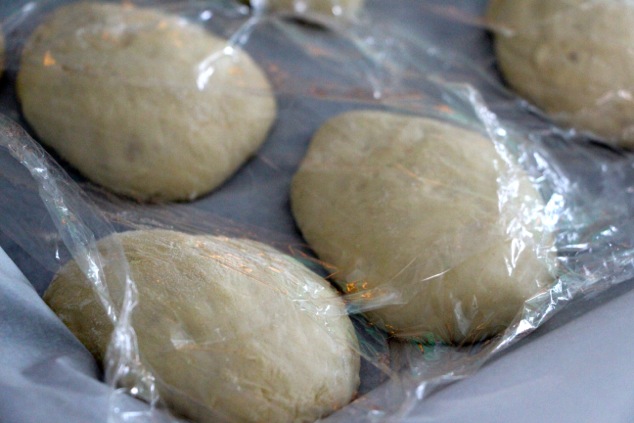 When the rolls have risen, they are very delicate and touching them directly with your hands may ruin their fluffiness and shape. Carefully lift the rolls and drop them in the oil. I like to use a spatula to help with this task – I slide it carefully right under the roll. Another trick is to have each roll on a separate little square parchment paper and just lift the parchment paper and drop it together into the oil (you’ll be able to “fish out” the parchment paper from the pot after a second or two).
When the rolls have risen, they are very delicate and touching them directly with your hands may ruin their fluffiness and shape. Carefully lift the rolls and drop them in the oil. I like to use a spatula to help with this task – I slide it carefully right under the roll. Another trick is to have each roll on a separate little square parchment paper and just lift the parchment paper and drop it together into the oil (you’ll be able to “fish out” the parchment paper from the pot after a second or two).
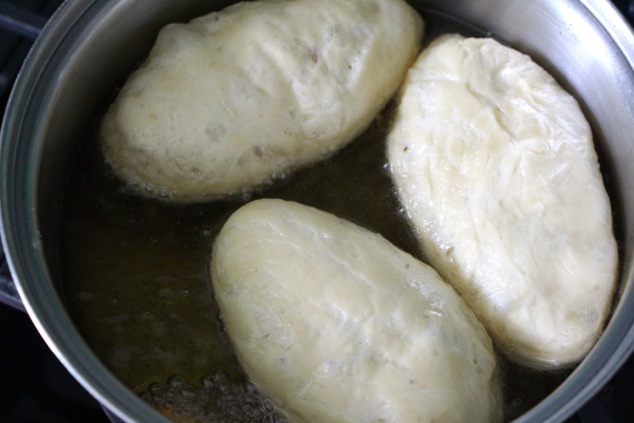 Don’t overcrowd the pot-three or four at a time are enough.
Don’t overcrowd the pot-three or four at a time are enough.
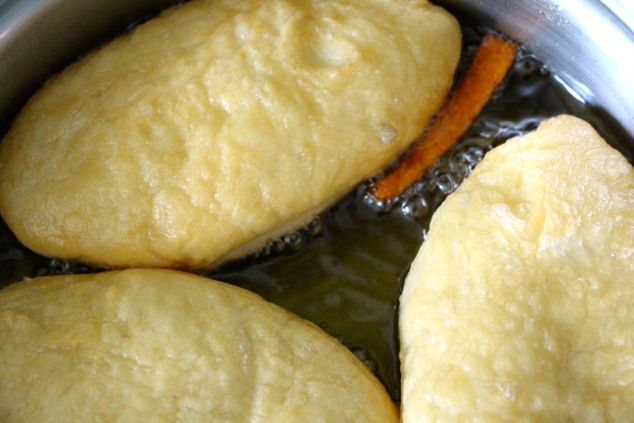
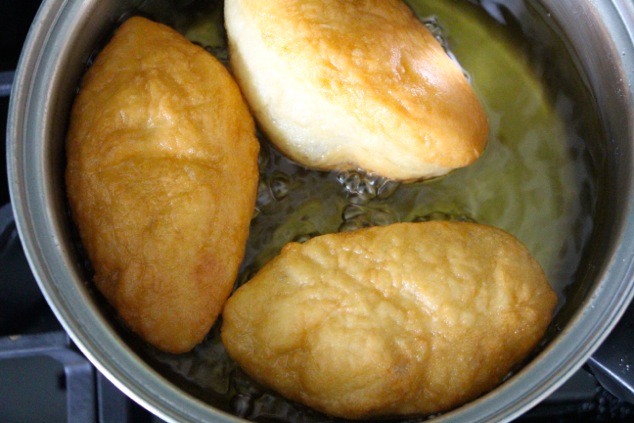 The roll floats to the top so once it gets golden on one side, make sure to flip it and fry it on the other side as well. Depends on the size of the rolls, it takes about 2-3 minutes on each side and keeping the oil on medium heat is crucial for the rolls to cook on the inside as well.
The roll floats to the top so once it gets golden on one side, make sure to flip it and fry it on the other side as well. Depends on the size of the rolls, it takes about 2-3 minutes on each side and keeping the oil on medium heat is crucial for the rolls to cook on the inside as well.
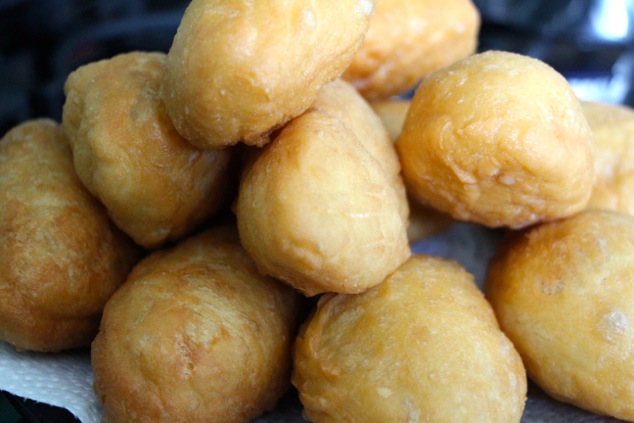
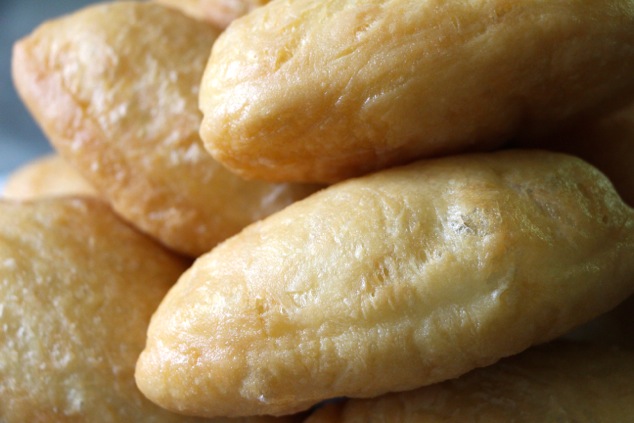 Remove the fried rolls onto paper-toweled surface to get rid of the excess oil. These rolls have the best texture – thin, crispy crust on the outside and soft, fluffy inside.
Remove the fried rolls onto paper-toweled surface to get rid of the excess oil. These rolls have the best texture – thin, crispy crust on the outside and soft, fluffy inside.
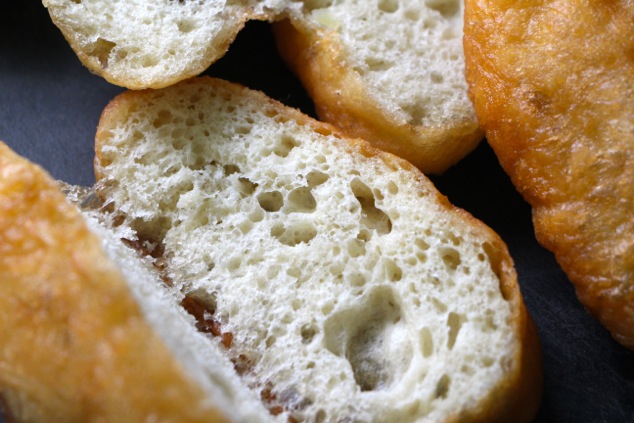
Beautiful air bubbles on the inside…
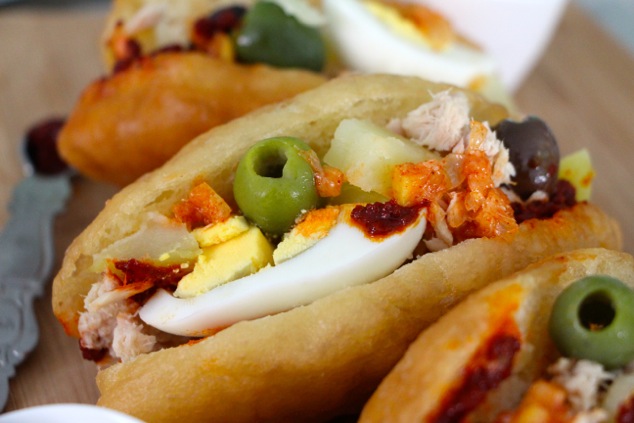
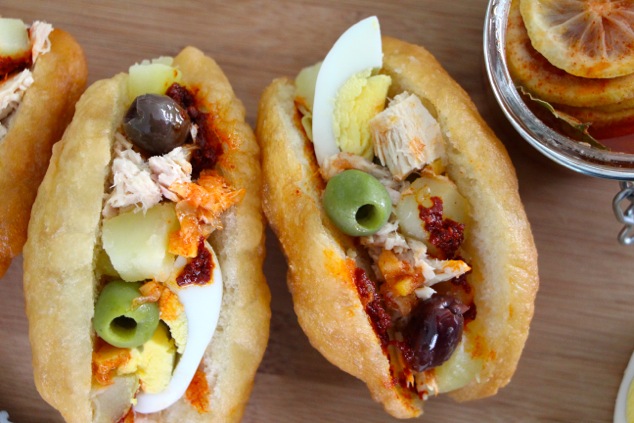 When you are ready to eat, open the rolls and stuff them with tuna, olives, hard-boiled egg, boiled potatoes, Harissa and preserved lemons.
When you are ready to eat, open the rolls and stuff them with tuna, olives, hard-boiled egg, boiled potatoes, Harissa and preserved lemons.
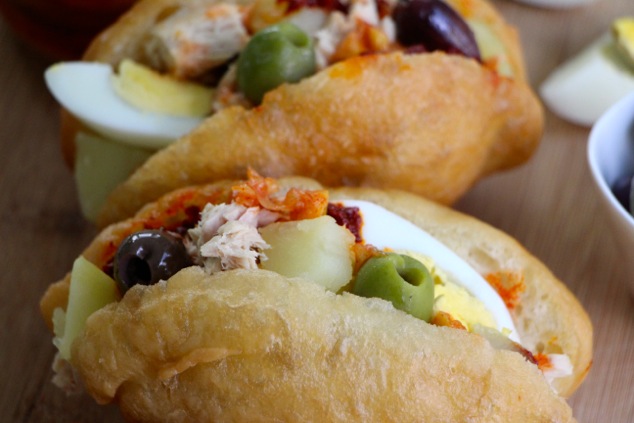 Get ready for one of the greatest sandwich bites ever! 🙂
Get ready for one of the greatest sandwich bites ever! 🙂
—————————————————————————-
Quick Recipe:
Tunisian Fricassee (Fricassé)-
Place the Flour in a large bowl and create a crater in the middle.
Add Dry Yeast, Sugar and ½ cup of Warm Water in the crater.
Cover with the Flour and allow 15 minutes for the Yeast to get bubbly and active.
Add the rest of the Warm Water and start kneading the dough.
Add Salt and continue kneading.
When the dough is unified add Canola Oil and continue kneading.
Form a ball and cover the bowl with plastic wrap.
Place the dough in a warm place and allow it to rise for 90 minutes to 2 hours.
After the dough doubled its size, knead it one more time.
Form dough balls (20-25) equal in size.
Place the dough balls on sprayed parchment paper and cover.
Allow them to rise for 20 minutes.
Transfer carefully to the oil and deep fry for couple of minutes on each side until golden brown.
Remove the fried rolls onto paper-toweled surface to get rid of the excess oil.
Stuff each roll with tuna, olives, hard-boiled egg, boiled potatoes, Harissa and preserved lemons.

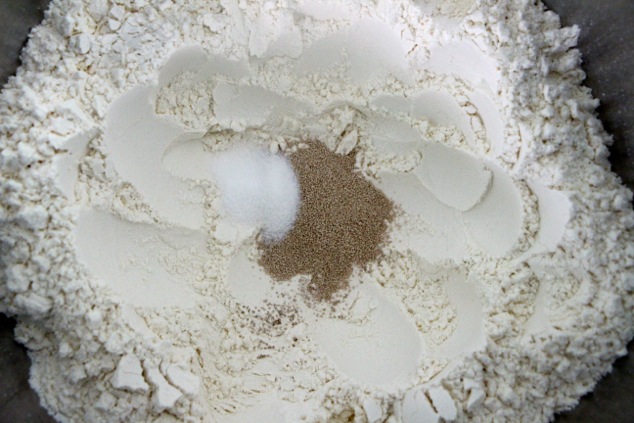
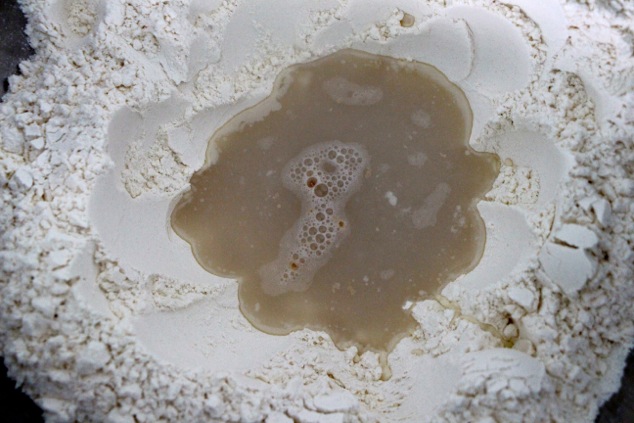
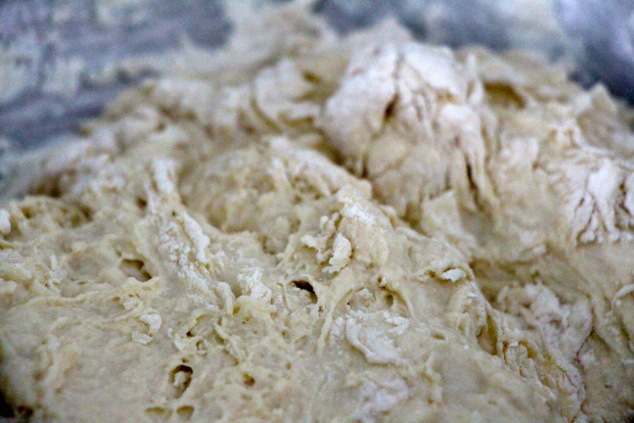
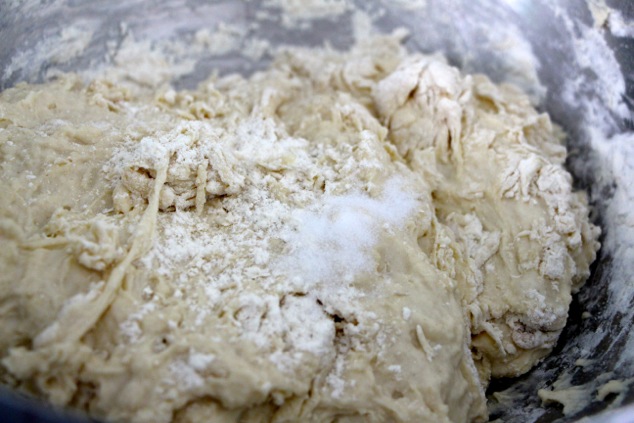
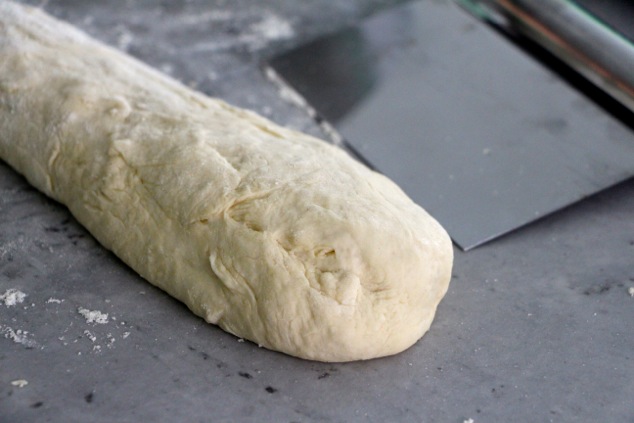
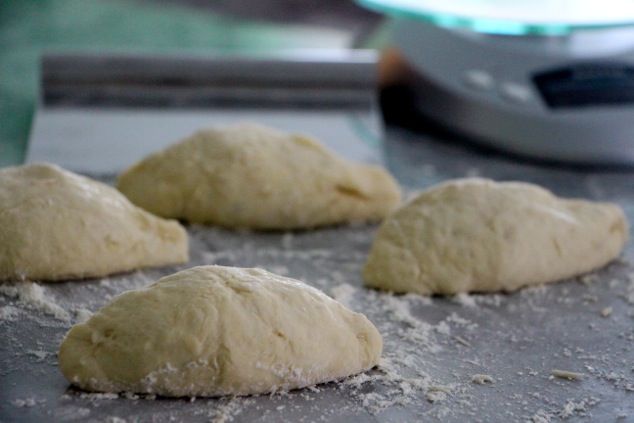
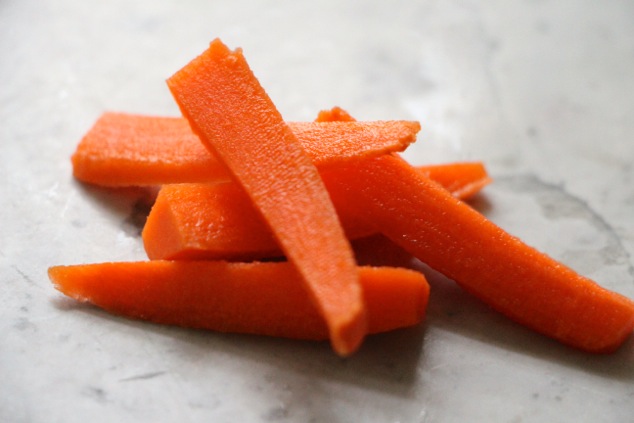
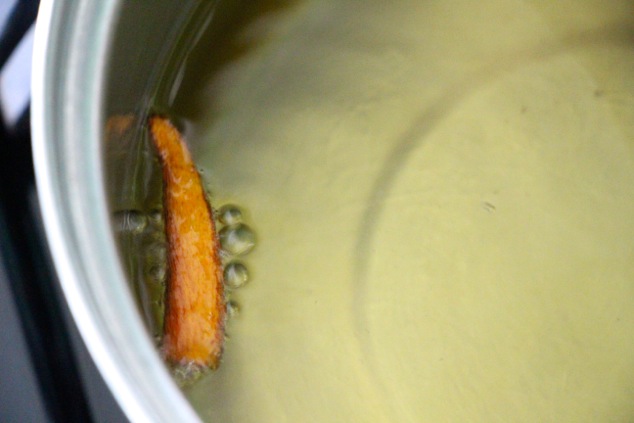
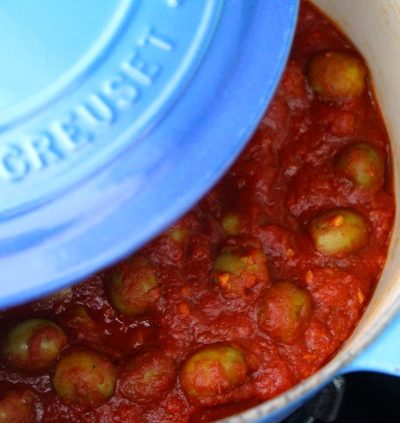
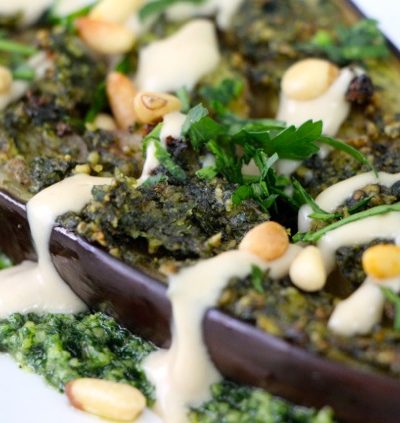
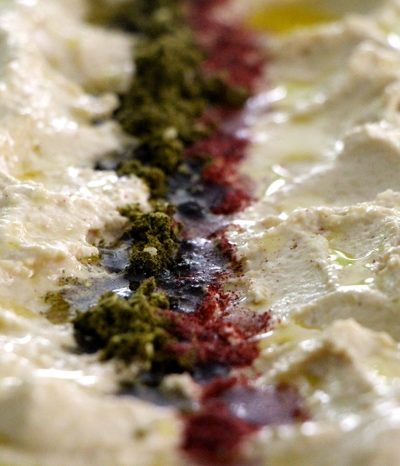
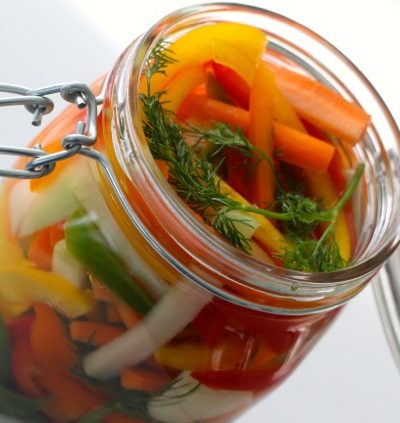
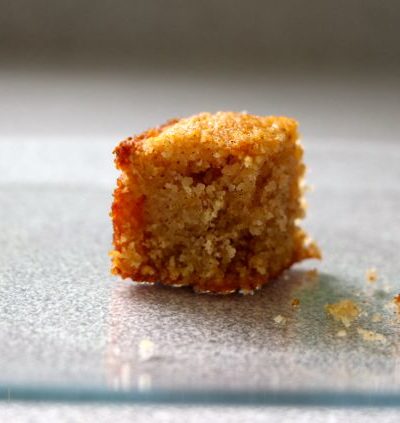
Thank you for the recipe! I will certainly make this sandwich. Hope you and the kids have a great trip!!!
So glad to hear that!Enjoy Mark!